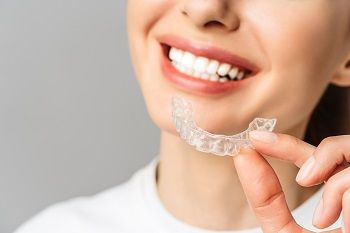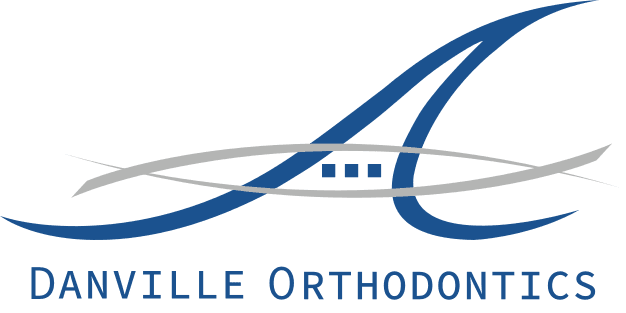Orthodontic Treatment for Adults: Pros and Cons
Orthodontic treatment for adults offers more than just cosmetic improvement. It can address oral health concerns like misaligned teeth, overcrowding, and bite irregularities. Beyond the aesthetic benefits, straightening your teeth as an adult can relieve jaw pain, improve speech clarity, and reduce the risk of tooth decay and gum disease. The advancements in orthodontic technology have also led to the development of discreet treatment options, minimizing the impact on your daily life and appearance.
However, as with any medical or dental treatment, there are considerations and potential drawbacks to be aware of. Treatment duration tends to be longer for adults than younger patients, and you may experience temporary discomfort and adjustment issues during the process. Compliance and maintaining good oral hygiene become crucial factors in achieving successful outcomes. Financial aspects and insurance coverage limitations may also influence your decision-making process.
In this blog, we will delve into the world of orthodontic treatment for adults, exploring its pros and cons and the impact it can have on your lifestyle. By understanding the benefits and potential challenges, you can make an informed decision about this transformative journey.
Pros of Orthodontic Treatment for Adults
Orthodontic treatment for adults offers numerous advantages beyond just aesthetic improvements. Here are some of the key benefits:
- Improved Oral Health: Improving the alignment of your teeth can greatly benefit your oral health. Teeth that are properly aligned are much easier to clean, which reduces the likelihood of plaque buildup, tooth decay, and gum disease. Orthodontic treatment can also correct bite irregularities, improving the overall function and health of your teeth and jaws.
- Enhanced Aesthetics and Self-Confidence: A smile can significantly impact self-esteem and confidence. Orthodontic treatment can correct crooked teeth, close gaps, and align your smile, giving you the beautiful, straight teeth you've always desired. Feeling proud of your smile can improve social interactions, professional relationships, and happiness.
- Potential Relief from Jaw Pain and Discomfort: Malocclusions (bite problems) can lead to jaw pain, headaches, and discomfort. Addressing these bite issues through orthodontic treatment can alleviate or reduce these symptoms, enhancing your comfort and overall quality of life.
- Better Speech and Pronunciation: Misaligned teeth can affect speech clarity and pronunciation. Orthodontic treatment can align your teeth and jaws, helping you articulate words more clearly and improving your overall speech.
- Potential Reduction in the Risk of Tooth Decay and Gum Disease: Crooked or overcrowded teeth can make oral hygiene challenging, creating hard-to-reach areas where plaque and food particles can accumulate. Straightening your teeth through orthodontic treatment can make brushing and floss more effective, reducing the risk of tooth decay, cavities, and gum disease.
- Potential Improvement in Facial Symmetry: Orthodontic treatment focuses on teeth alignment and considers facial aesthetics. By improving the alignment of your teeth, orthodontic treatment can help enhance facial symmetry and balance, leading to a more harmonious appearance.
- Discreet Treatment Options: Modern orthodontic advancements have introduced discreet treatment options. Clear aligners, such as Invisalign, are nearly invisible and can be removed for eating and oral hygiene. Ceramic or clear braces are also less noticeable than traditional metal braces, allowing you to undergo treatment with minimal impact on your appearance.
- Long-Term Investment: Orthodontic treatment is a long-term investment in oral health and overall well-being. Straighter teeth are easier to maintain, reducing the likelihood of future dental issues and potentially saving you from costly dental procedures.
Considering these pros, you can appreciate the comprehensive benefits of orthodontic treatment for adults. It's essential to consult with an orthodontist to determine the most suitable treatment option for your specific needs and achieve the smile you've always wanted.
Cons of Orthodontic Treatment for Adults
While orthodontic treatment for adults has numerous benefits, knowing the potential challenges and drawbacks is essential. Here are some cons to consider:
- Longer Treatment Duration: Adult orthodontic treatment often takes longer than treatment for children or teenagers. The adult jaw is fully developed, which can make the teeth move more slowly. The duration of treatment can vary depending on the case's complexity, ranging from several months to a few years.
- Discomfort and Soreness: During orthodontic treatment, it is common to experience temporary discomfort, soreness, and pressure as the teeth gradually shift into their new positions. This discomfort can make eating certain foods or speaking temporarily challenging until you adjust to the appliances.

- Adjusting to Changes in Speech and Eating Habits: The presence of orthodontic appliances, such as braces or aligners, may require an adjustment period for speech and eating habits. Initially, you may have difficulty pronouncing certain sounds or experience slight changes in your ability to bite and chew. However, most individuals adapt quickly and regain normal speech and eating patterns.
- Oral Hygiene Challenges: Maintaining good oral hygiene becomes crucial during orthodontic treatment. Brackets, wires, or aligners can create additional spaces for accumulating food particles and plaque, increasing the risk of tooth decay and gum problems. Keeping your teeth and orthodontic appliances clean may require extra effort and diligence.
- Financial Considerations and Insurance Coverage: Orthodontic treatment can be a significant financial investment. Costs vary depending on the treatment type, complexity, and duration. Considering the financial aspect and whether it aligns with your budget is important. Additionally, insurance coverage for adult orthodontic treatment may be limited or may not cover the full expenses, so it's essential to check your insurance policy for details.
- Lifestyle Impact and Compliance: Orthodontic treatment requires a commitment to certain lifestyle adjustments. This includes avoiding certain foods that can damage braces or aligners, adopting a more diligent oral hygiene routine, and attending regular appointments with the orthodontist. Compliance with treatment recommendations and wearing appliances as prescribed are crucial for achieving the desired results.
- Temporary Appearance Changes: Traditional metal braces are more noticeable, which may affect some adults' confidence in their appearance during treatment. However, with advancements in orthodontic technology, more discreet options are available, such as ceramic braces or clear aligners, which minimize the visibility of orthodontic appliances.
Despite these potential challenges, many adults find that the benefits of orthodontic treatment outweigh the cons. It is important to discuss any concerns or questions with an orthodontist to gain a comprehensive understanding of the potential drawbacks and how they can be managed effectively.
Lifestyle Impact and Compliance
Undergoing orthodontic treatment as an adult can impact your daily life and require certain adjustments. Here are some aspects to consider:
- Dietary Restrictions or Modifications: During orthodontic treatment, dietary restrictions or modifications may be required to protect your appliances. For individuals with traditional braces, sticky, chewy, or hard foods should be avoided, as they can damage the brackets or wires. In the case of clear aligners, you have the advantage of removing them while eating, allowing for more flexibility in food choices. However, it's important to maintain a balanced diet and avoid excessive consumption of sugary or acidic foods that can contribute to tooth decay.
- Oral Hygiene Routine: Proper oral hygiene becomes even more crucial during orthodontic treatment. Maintaining a diligent brushing and flossing routine is essential to keep your teeth, gums, and orthodontic appliances clean. Orthodontists may recommend specific techniques or tools to assist in cleaning around brackets, wires, or aligners. Adhering to a strict oral hygiene regimen helps prevent tooth decay, gum inflammation, and other health issues.
- Regular Orthodontic Appointments: Adult orthodontic treatment involves regular appointments with your orthodontist. These appointments are necessary to monitor progress, adjust, and ensure your treatment plan is on track. Keeping up with these appointments is important for the success of your treatment. It may require some flexibility in your schedule to accommodate these visits.
- Compliance with Treatment Recommendations: Compliance is essential for achieving the desired results. It involves wearing your orthodontic appliances, whether braces or aligners, as your orthodontist prescribes. Please comply with instructions, such as wearing aligners for the recommended time or properly using elastics with braces, to ensure treatment time and progress. Maintaining good compliance ensures that your treatment progresses efficiently.

- Speech Adjustments: It is common to experience a temporary adjustment period with speech when orthodontic appliances are first placed. It may be challenging to pronounce certain sounds or speak with clarity. However, most adults adapt quickly and regain their normal speech patterns with practice and time.
- Impact on Social Interactions: While orthodontic appliances are common among teenagers, adults may feel self-conscious about their appearance during treatment, especially with traditional metal braces. However, it's important to remember that orthodontic treatment is temporary, and the long-term benefits will outweigh any temporary self-consciousness. Clear aligners or ceramic braces can be alternative options that are less noticeable, helping to minimize the impact on your social interactions.
It's crucial to discuss any concerns or lifestyle adjustments with your orthodontist. They can guide, address your specific needs, and help you navigate the challenges of orthodontic treatment, ensuring a successful and positive experience. Remember, your commitment to complying with treatment recommendations and making necessary lifestyle adjustments will contribute to achieving the best possible outcome.
Contact your Danville dentist, Dr. Hoss Abar, DDS, MSD, at Danville Orthodontics to learn more about the Pros and Cons of Orthodontic Treatment for Adults.
Resource:
What is Orthodontics, and Why Is It Important?
*This media/content or any other on this website does not prescribe, recommend, or prevent any treatment or procedure. Therefore, we highly recommend that you get the advice of a qualified dentist or other medical practitioners regarding your specific dental condition.*
